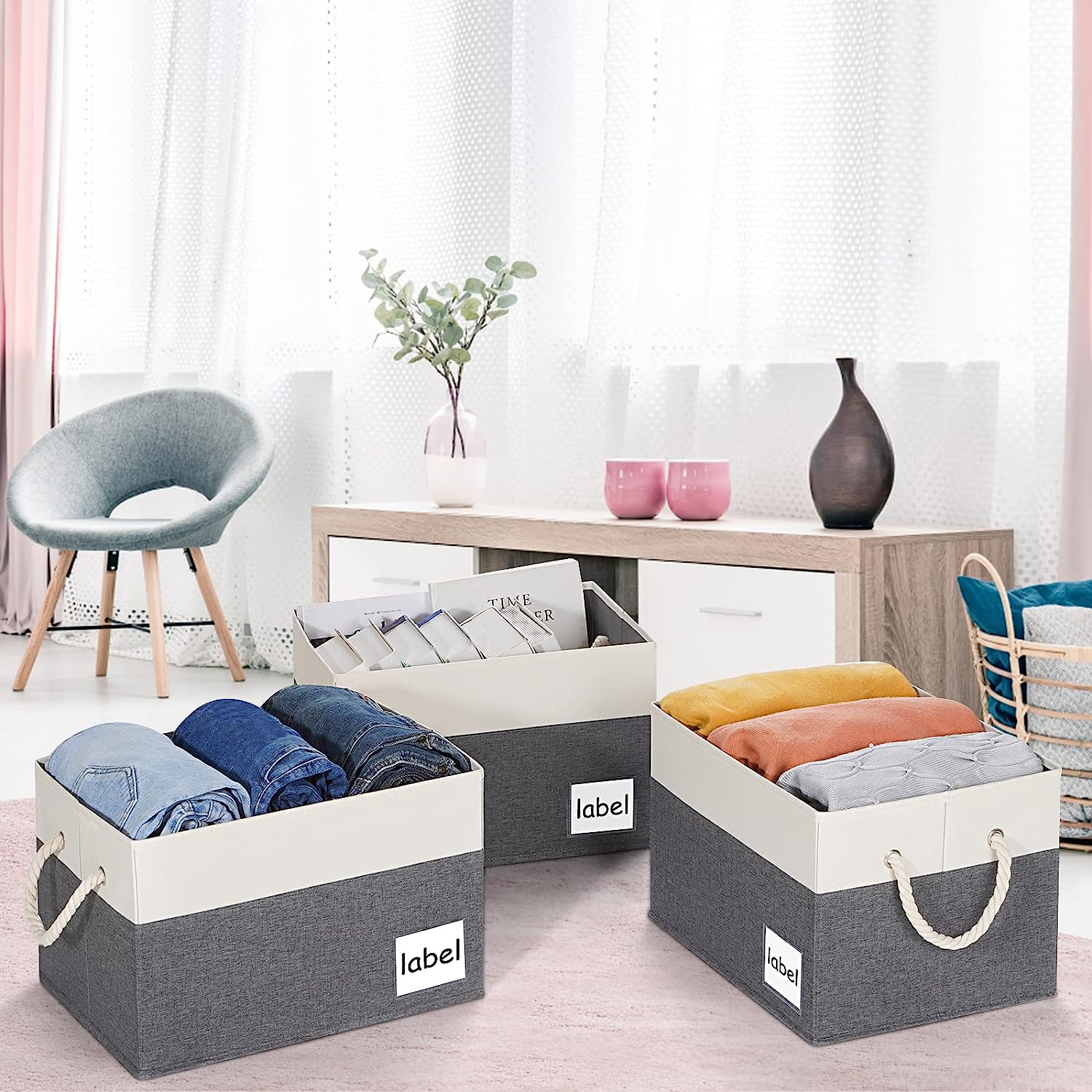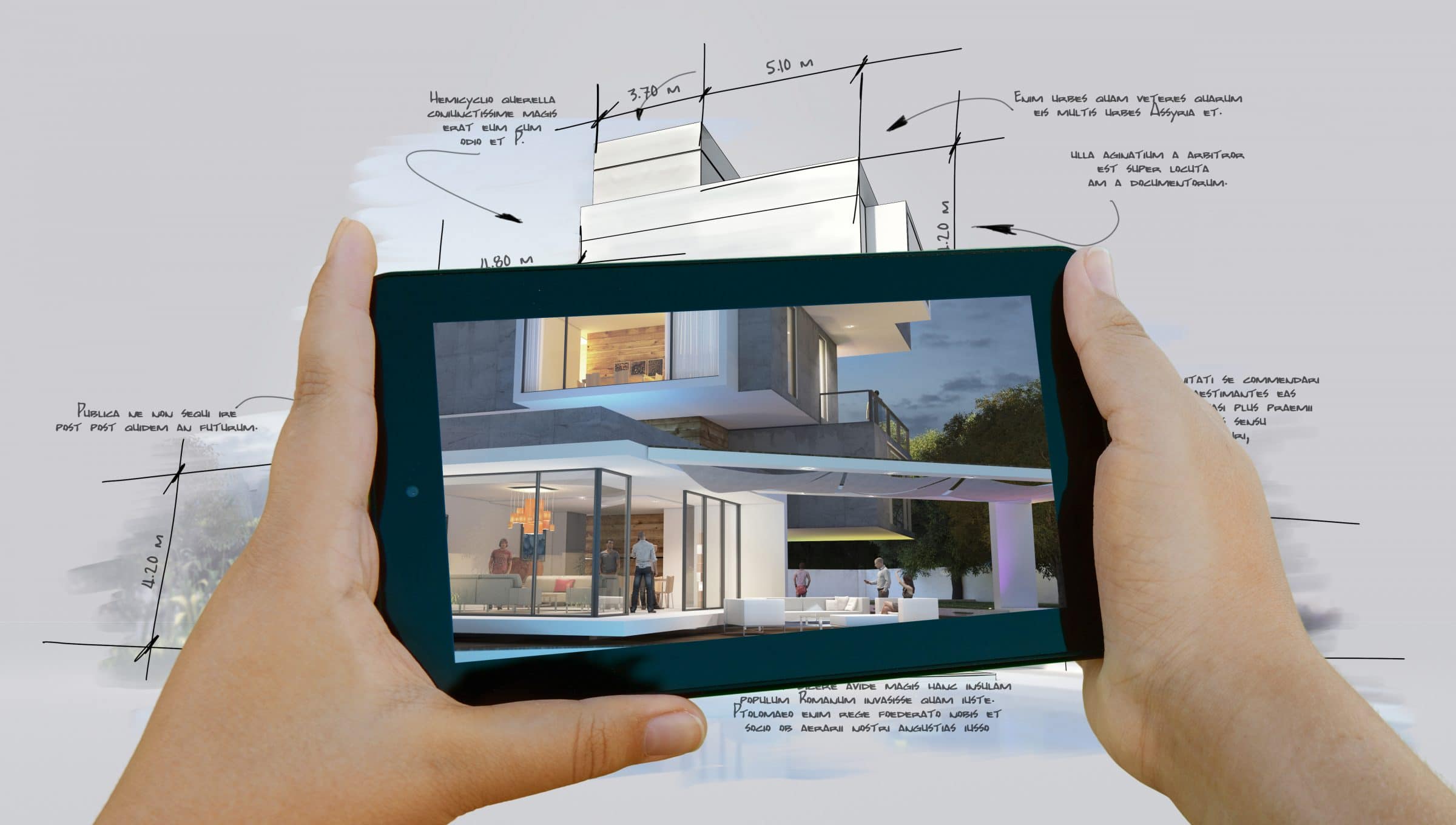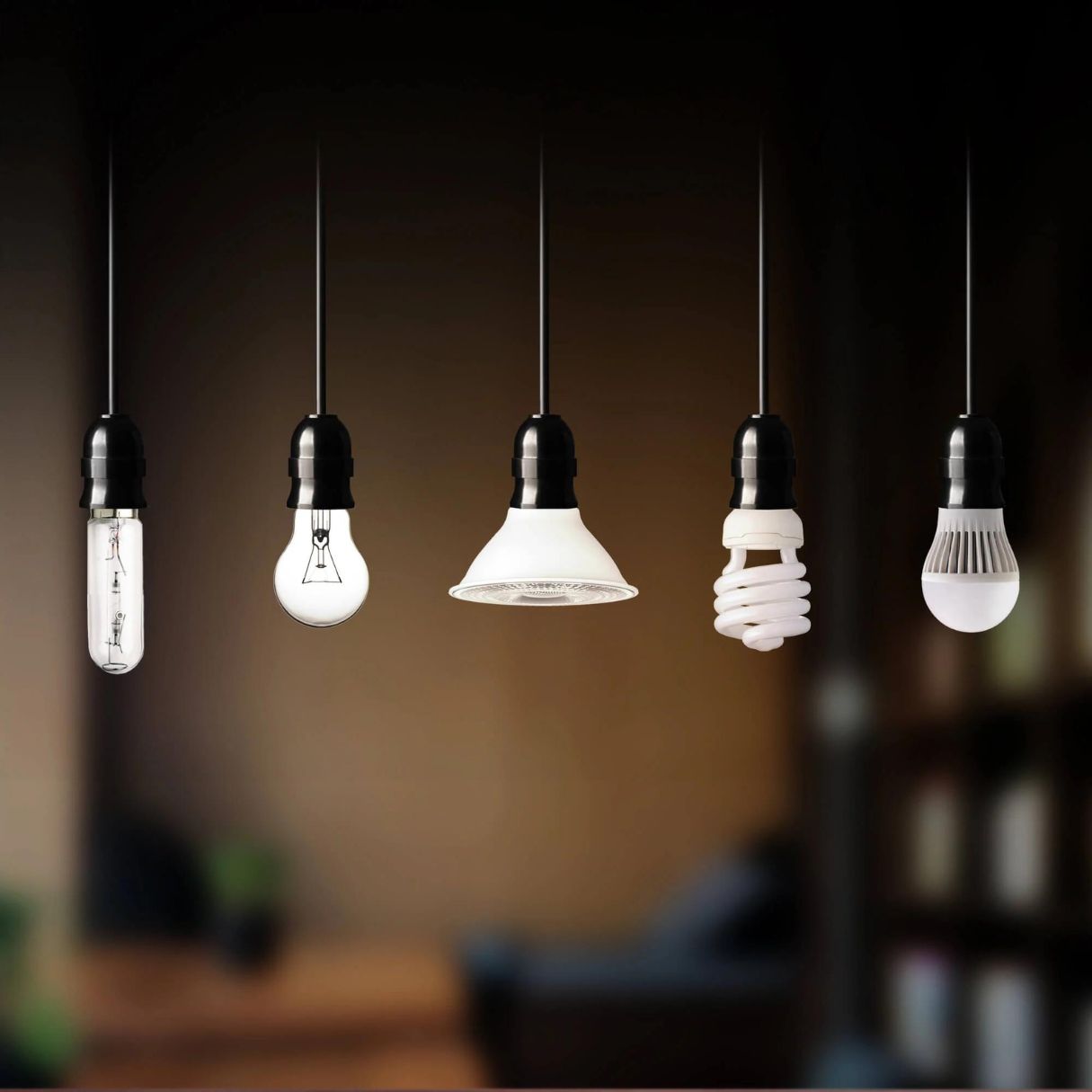

Articles
Why Organizing Is Important
Modified: October 27, 2024
Discover the importance of organizing your space with these practical storage ideas. Maximize efficiency and declutter your life with smart storage solutions.
(Many of the links in this article redirect to a specific reviewed product. Your purchase of these products through affiliate links helps to generate commission for Storables.com, at no extra cost. Learn more)
Introduction
In today’s fast-paced world, where we are bombarded with countless tasks and overwhelmed by the constant flow of information, staying organized has become more important than ever. The ability to efficiently manage our time, belongings, and ideas can significantly impact our overall productivity, mental well-being, and quality of life. Whether it’s in our professional or personal lives, having effective storage ideas and organizational systems in place can provide numerous benefits.
In this article, we will explore the importance of organization and delve into several key advantages that come with it. From increased productivity and reduced stress to improved focus and accessibility of information, we will discuss how implementing proper storage ideas can make a positive difference in various aspects of our lives.
Key Takeaways:
- Embracing effective storage ideas and organizational systems can lead to increased productivity, reduced stress, improved focus, and efficient time management, transforming our physical and mental spaces for a more harmonious and productive life.
- Organization positively impacts mental well-being, reduces stress, promotes clearer thinking, and fosters a sense of calm, creating a harmonious environment that supports overall mental and emotional well-being.
Read more: Why Is Woodworking Important
Benefits of Organization
When we talk about organization, we are not just referring to tidying up our physical spaces. It goes beyond simply decluttering and arranging our belongings. True organization encompasses both physical and mental aspects, allowing us to streamline our processes, increase efficiency, and create a sense of harmony in our lives. Let’s explore some of the key benefits of organization:
-
Increased Productivity
A well-organized environment promotes productivity. By having a designated place for everything and keeping our workspace clutter-free, we can easily locate the tools, files, or resources needed to complete tasks. This saves time and prevents distractions, allowing us to work more efficiently and accomplish more in a given time frame.
-
Reduced Stress and Clutter
Cluttered spaces lead to cluttered minds. When our physical surroundings are disorganized, it can create a sense of mental chaos and increase stress levels. On the other hand, an organized environment enhances mental clarity, reduces distractions, and promotes a sense of calm and serenity.
-
Time Management
Organizing our tasks, schedules, and priorities is crucial for effective time management. By using tools such as calendars, planners, or digital apps, we can allocate our time more efficiently and ensure that important deadlines and commitments are met. This helps us stay on track and avoid the stress of last-minute rushes.
-
Read more: Why Are Gutters Important
Improved Focus and Concentration
Organized spaces eliminate visual distractions and create an environment conducive to focus and concentration. Without the clutter and chaos around us, we can better concentrate on the task at hand, leading to increased productivity and higher quality work.
-
Enhanced Efficiency
Organizational systems can streamline our processes and workflows, leading to increased efficiency. By identifying and eliminating unnecessary steps, optimizing our routines, and implementing time-saving strategies, we can accomplish tasks more quickly and effectively.
These are just a few of the benefits that come with organizing our lives. By implementing storage ideas and organizational systems that work for us, we can experience a wide range of positive outcomes, from increased productivity and reduced stress to improved time management and focus. In the following sections, we will delve deeper into each one of these benefits, exploring how they can positively impact our lives and providing practical tips for achieving and maintaining organization.
Increased Productivity
One of the key benefits of organization is the significant boost it provides to our productivity levels. When we have a well-organized environment, we can streamline our workflow and eliminate unnecessary time-wasting activities. Here are some ways in which organization enhances productivity:
- Efficient use of time: When our surroundings are organized, we can easily locate the tools, resources, and documents we need to complete tasks. This saves valuable time that would otherwise be spent searching for misplaced items. By having designated spaces for everything and implementing systems such as labeled folders or storage bins, we can minimize the time spent on searching and maximize the time spent on actual work.
- Reduced distractions: Cluttered and disorganized spaces can be highly distracting, making it difficult to concentrate on the task at hand. By decluttering and organizing our physical environment, we create a clean and focused space that allows us to stay on track and be more productive. Removing visual distractions helps to maintain better focus and cognitive clarity while working.
- Optimized work processes: Organizing our workflows and tasks enables us to identify inefficiencies and streamline our processes. By breaking down complex tasks into smaller, manageable steps and setting clear goals, we can create a roadmap for completion. This approach helps to prioritize tasks, assign deadlines, and allocate resources effectively, resulting in increased productivity and better time management.
- Enhanced multitasking: When our workspaces are organized, we can easily switch between tasks without wasting time or getting overwhelmed by the mess around us. Having a clear overview of our priorities and being able to quickly retrieve the necessary materials allows us to seamlessly transition from one task to another, making the most of our time and energy.
- Encouragement of proactive planning: Being organized promotes proactive planning and strategizing. By having systems in place to track deadlines, milestones, and upcoming projects, we can anticipate and prepare for future needs. This proactive approach to planning ensures that we are always one step ahead, minimizing the chances of missed deadlines or rushed work.
By implementing effective storage ideas and organizational systems, we can boost our productivity by saving time, reducing distractions, optimizing workflows, enhancing multitasking capabilities, and encouraging proactive planning. The benefits of increased productivity extend beyond work-related tasks and can positively impact all areas of our lives, leading to a greater sense of accomplishment and overall satisfaction.
Reduced Stress and Clutter
Have you ever found yourself feeling overwhelmed and stressed when surrounded by a cluttered and disorganized environment? The connection between clutter and stress is undeniable. When our physical spaces are cluttered, it can have a negative impact on our mental well-being. Here are some ways in which organization can help reduce stress:
- Mental clarity: A cluttered environment can lead to a cluttered mind. When we are surrounded by piles of papers, scattered belongings, and disorganized spaces, it can create a sense of chaos and overwhelm. On the other hand, an organized space promotes mental clarity and calmness. A tidy and clutter-free environment allows us to think more clearly, focus better, and make decisions with ease.
- Peace of mind: Knowing where everything is and having easy access to the items we need gives us a sense of peace and control. When we have well-organized storage solutions in place, we can quickly find what we are looking for without feeling the frustration and stress of searching through piles of clutter. This sense of order and control can lead to a more peaceful and stress-free mindset.
- Reduced visual distractions: Visual clutter can be highly distracting and overwhelming. It can hinder our ability to focus and concentrate on tasks, leading to decreased productivity and increased stress levels. By decluttering and organizing our physical spaces, we create a visually soothing environment that allows our minds to relax and stay focused on the task at hand.
- Improved sleep quality: A cluttered bedroom can interfere with our ability to get a good night’s sleep. It can create a sense of unease and restlessness, making it difficult to relax and unwind. By organizing our bedrooms and creating a peaceful and clutter-free sleeping environment, we can promote better sleep quality, leading to improved mood, energy levels, and overall well-being.
- Lowered stress levels: Living in cluttered and disorganized spaces can subconsciously add to our stress levels. It may create a constant feeling of overwhelm, as if we are always “behind” or unable to keep up. On the other hand, an organized environment can help to alleviate stress by creating a sense of order and control. When everything has a designated place and is kept in an organized manner, we can navigate our spaces and tasks with ease, reducing stress and promoting a sense of calm.
By incorporating storage ideas and organizational practices into our lives, we can experience a significant reduction in stress levels. A clutter-free and organized environment allows for mental clarity, peace of mind, reduced visual distractions, improved sleep quality, and overall lower stress levels. Embracing organization is not only beneficial for our physical spaces but also for our mental well-being.
Read more: Why HVAC Is Important
Time Management
In today’s fast-paced world, effective time management is crucial for success and overall well-being. When we are able to manage our time efficiently, we can accomplish tasks, meet deadlines, and achieve our goals with less stress and more productivity. Organization plays a vital role in effective time management. Here are some ways in which organization can help improve time management:
- Clear prioritization: Through organization, we can gain clarity on our priorities and identify the most important tasks. By using tools like to-do lists, calendars, or digital planners, we can prioritize tasks based on deadlines, urgency, or importance. This helps us allocate our time and resources effectively and ensures that we focus on tasks that truly matter.
- Delegating and outsourcing: Effective organization allows us to identify tasks that can be delegated or outsourced to others. By recognizing our strengths and limitations, we can allocate resources wisely and free up our time to focus on high-value activities. Delegation and outsourcing not only help to manage our workload but also foster collaboration and efficiency.
- Breaking down tasks: Complex tasks can be overwhelming and lead to procrastination. Through organization, we can break down large tasks into smaller, manageable subtasks. This makes the overall task more approachable and allows us to set realistic goals and deadlines. Breaking down tasks also helps to identify potential bottlenecks and take corrective actions in advance.
- Scheduling and setting deadlines: With proper organization, we can create structured schedules and set deadlines for our tasks. By blocking out specific time slots for various activities and assigning deadlines to each task, we can ensure that we make progress towards our goals. Setting deadlines adds a sense of urgency and helps to avoid the trap of procrastination.
- Eliminating time wasters: Organization empowers us to identify and eliminate activities or behaviors that consume valuable time without adding substantial value. This can include minimizing distractions such as excessive social media use, unproductive meetings, or unnecessary interruptions. By being mindful of how we spend our time and eliminating time wasters, we can regain control of our schedules and increase our productivity.
By incorporating effective storage ideas and organizational strategies into our lives, we can significantly improve our time management skills. Clear prioritization, delegation, breaking down tasks, scheduling, and eliminating time wasters all contribute to better time management and increased productivity. Organization is the key to optimizing our use of time and achieving a better work-life balance.
Improved Focus and Concentration
In a world filled with distractions and constant stimuli, maintaining focus and concentration can be a challenge. However, organization can play a significant role in enhancing our ability to stay focused and concentrate on the task at hand. Here are some ways in which organization can improve focus and concentration:
- De-cluttering the physical environment: A cluttered and disorganized space can be highly distracting and hinder our ability to concentrate. By organizing our physical environment and decluttering unnecessary items, we create a clean and clear space that promotes focus and concentration. With fewer visual distractions, our minds can better stay present and engaged in the task at hand.
- Creating a designated workspace: Having a designated workspace can signal our brains that it is time to focus and be productive. Whether it’s a separate room, a dedicated desk, or a specific corner of a room, having a consistent and clutter-free workspace can help us mentally shift into a work mindset and enhance our ability to concentrate.
- Implementing time-blocking techniques: Organizing our schedules and using time-blocking techniques can improve focus by allowing us to allocate dedicated time slots for specific tasks. By setting aside uninterrupted blocks of time for focused work, we can eliminate distractions and fully immerse ourselves in the task at hand. This helps to maintain a flow state and improves concentration.
- Prioritizing and setting clear goals: Organization helps us prioritize tasks and set clear goals. When we have a clear understanding of what needs to be done and what outcomes we are working towards, it becomes easier to maintain focus. By breaking down goals into smaller, actionable steps, we can remain focused on the immediate task and avoid getting overwhelmed.
- Using productivity tools and techniques: There are numerous productivity tools and techniques available that can aid in maintaining focus and concentration. From time management apps and project management software to techniques like the Pomodoro Technique (working in focused bursts with short breaks), using these tools can help us stay organized and focused on our tasks.
By incorporating organizational practices into our lives, we can create an environment and mindset that supports improved focus and concentration. By decluttering our physical space, creating a designated workspace, implementing time-blocking techniques, setting clear goals, and utilizing productivity tools, we can enhance our ability to concentrate, leading to increased productivity and higher-quality work.
Enhanced Efficiency
Efficiency is the ability to accomplish tasks effectively and with minimal wasted effort. By implementing effective storage ideas and organizational systems, we can optimize our workflows and enhance our overall efficiency. Here are some ways in which organization can lead to enhanced efficiency:
- Streamlined processes: Organization allows us to analyze our workflows and identify areas for improvement. By eliminating redundant steps, minimizing unnecessary tasks, and streamlining our processes, we can increase efficiency. An organized workflow ensures that tasks are completed in a logical and efficient manner, minimizing delays and optimizing our use of time and resources.
- Standardization and consistency: Organizational systems provide a framework for standardization and consistency. By establishing clear guidelines, procedures, and protocols, we can ensure that tasks are executed in a consistent manner. This reduces the risk of errors, enables smoother collaborations, and improves overall efficiency.
- Optimized resource allocation: With proper organization, we can effectively allocate resources such as time, manpower, and materials. By having a clear overview of our resources and needs, we can make informed decisions regarding resource allocation, ensuring that the right resources are available at the right time. This prevents delays, reduces waste, and maximizes efficiency.
- Automation and technology integration: Organization opens up opportunities for automation and the integration of technology into our workflows. By automating repetitive tasks and leveraging technology tools and software, we can increase efficiency and reduce the risk of human error. Automated reminders, digital file management systems, and project management software are just a few examples of how technology integration can enhance efficiency.
- Continuous improvement: Organization promotes a mindset of continuous improvement. By regularly reviewing and evaluating our processes, seeking feedback, and implementing changes, we can constantly refine and enhance our efficiency. This proactive approach to identifying and addressing bottlenecks or areas of inefficiency allows us to continuously improve our workflows and achieve higher levels of productivity.
By embracing and implementing effective organization strategies, we can enhance our efficiency in various aspects of our lives. Streamlined processes, standardization, optimized resource allocation, automation, technology integration, and a commitment to continuous improvement all contribute to improved efficiency and overall success.
Prioritization and Goal Setting
Effectively prioritizing tasks and setting meaningful goals are essential skills for success in any aspect of life. Organization plays a key role in enabling us to prioritize effectively and set goals that are achievable and aligned with our values. Here are some ways in which organization can enhance prioritization and goal-setting:
- Clear understanding of priorities: By organizing our tasks and commitments, we gain a clear understanding of our priorities. We can evaluate the importance and urgency of each task, allowing us to focus our time and energy on what truly matters. This prevents us from being overwhelmed by an endless to-do list and helps us make informed choices about where to invest our efforts.
- Breaking down goals into actionable steps: Organization enables us to break down larger goals into smaller, actionable steps. By breaking down goals, we can establish a clear roadmap for achieving them. This not only makes our goals more manageable but also provides a sense of progress and accomplishment as we tick off each step along the way.
- Setting realistic timelines and deadlines: Through organization, we can set realistic timelines and deadlines for our goals and tasks. By considering factors such as workload, available resources, and potential obstacles, we can establish achievable timelines that motivate us to stay on track. Setting deadlines creates a sense of urgency and helps us prioritize tasks accordingly.
- Creating accountability: Organizational systems can help create accountability in goal setting and task management. By tracking our progress, documenting milestones, and having regular reviews or check-ins, we hold ourselves accountable for staying focused and making progress towards our goals. This accountability helps us stay motivated and committed to achieving our desired outcomes.
- Adapting to changing priorities: Life is dynamic, and priorities can change. Organization allows us to adapt and adjust our priorities when necessary. By regularly reassessing our goals and tasks, we can recognize when priorities have shifted and make the necessary adjustments. This flexibility helps us stay agile and ensure that our efforts are aligned with our current goals and values.
By incorporating effective storage ideas and organizational practices into our lives, we can enhance our ability to prioritize tasks effectively and set meaningful goals. Clear understanding of priorities, breaking down goals, setting realistic timelines, creating accountability, and adapting to changing priorities are key elements of successful prioritization and goal-setting. With organization as the foundation, we can align our actions with our aspirations and move closer to the fulfillment of our goals.
Read more: Why Plumbing Is Important
Better Decision Making
Effective decision making is a crucial skill in both personal and professional life. It involves analyzing options, considering relevant factors, and choosing the best course of action. Organization can significantly aid in the decision-making process by providing clarity, structure, and access to necessary information. Here are some ways in which organization can lead to better decision making:
- Access to relevant information: Being organized allows us to easily access the information needed for decision-making purposes. Whether it’s through well-organized files, digital folders, or a systematic approach to data management, organization ensures that the necessary information is readily available. This enables us to make well-informed decisions based on accurate and up-to-date information.
- Clear goal alignment: Strong organizational skills help us clarify our goals and objectives. By aligning our decisions with our goals, values, and priorities, we can make choices that are in line with our long-term vision. This clarity eliminates decision fatigue and enables us to focus on decisions that truly matter and contribute to our overall success and fulfillment.
- Structured decision-making process: Organization provides a structured framework for decision making. By breaking down complex decisions into smaller, more manageable steps, we can consider all relevant factors and evaluate potential alternatives. This systematic approach reduces the likelihood of overlooking important details and improves the quality of our decision-making process.
- Reduced emotional bias: Organizational systems can help reduce the influence of emotional bias on decision making. When we have a well-structured process and access to relevant information, we can make decisions based on facts, logic, and objective analysis rather than solely on emotions. This leads to more rational decision making, minimizing the potential for regrets or impulsive choices.
- Time management: Effective organization improves time management, allowing us to allocate sufficient time for decision-making processes. By giving ourselves the necessary time and space to evaluate options, consider consequences, and gather necessary input, we can make more thoughtful and deliberate decisions. Rushed decisions due to poor time management can often lead to suboptimal outcomes.
Embracing organizational practices and storage ideas can contribute to better decision making by providing access to relevant information, aligning decisions with goals, providing a structured process, reducing emotional bias, and improving time management. By incorporating organization into our decision-making processes, we can increase the likelihood of making well-informed choices that lead to positive outcomes and personal growth.
Organizing is important because it helps to reduce clutter, increase efficiency, and save time. It also allows for better prioritization and helps to reduce stress.
Streamlined Processes
In today’s fast-paced world, efficiency and productivity are highly valued qualities. Streamlining processes is a key component of achieving these goals. Organization plays a crucial role in streamlining processes by identifying inefficiencies, eliminating bottlenecks, and optimizing workflows. Here are some ways in which organization can contribute to streamlined processes:
- Identifying inefficiencies: Organization allows us to analyze our processes and identify areas that are inefficient or redundant. By mapping out our workflows and examining each step, we can pinpoint bottlenecks or unnecessary tasks that are hindering productivity. This awareness enables us to make informed decisions and implement changes to streamline processes.
- Eliminating unnecessary steps: Through organization, we can streamline processes by eliminating unnecessary steps or tasks. By questioning the value and relevance of each step, we can identify those that can be bypassed or consolidated. Removing these unnecessary steps reduces the time and effort required to complete a process and increases overall efficiency.
- Standardizing procedures: Setting standard operating procedures (SOPs) and workflows ensures consistency and efficiency in completing tasks. By organizing and documenting these procedures, we create a reference point for employees and team members to follow. Standardization helps reduce errors, minimizes confusion, and ensures that tasks are completed in the most efficient and effective manner.
- Implementing automation: Organizational systems, combined with technology, can facilitate automation of repetitive or time-consuming tasks. By leveraging automation tools and software, we can streamline processes by reducing manual intervention, minimizing errors, and freeing up time for more critical tasks. Automation improves efficiency, reduces costs, and enhances overall productivity.
- Managing workflows: Organizational tools, such as project management software or digital task boards, can help manage workflows more efficiently. By visually representing the progress of tasks, assigning responsibilities, and setting deadlines, we can streamline communication, track progress, and ensure that tasks are completed on time. This improves collaboration, coordination, and overall workflow efficiency.
By embracing organization and implementing effective storage ideas, we can streamline processes and achieve higher levels of efficiency. Identifying inefficiencies, eliminating unnecessary steps, standardizing procedures, implementing automation, and managing workflows are key elements of streamlining processes. A streamlined process not only increases productivity but also allows organizations to allocate resources more effectively, reduce costs, and remain competitive in a fast-paced business environment.
Improved Accessibility and Retrieval of Information
In today’s information-driven world, the ability to access and retrieve information quickly is of utmost importance. Organizing and storing information in a structured manner greatly enhances accessibility and retrieval. Here are some ways in which organization improves the accessibility and retrieval of information:
- Categorization and labeling: Organizing information into categories and labeling them appropriately makes it easier to locate and retrieve specific items. Whether it’s physical files or digital documents, assigning clear and consistent labels helps us find information efficiently. Categorization and labeling also enable us to create logical connections between related pieces of information, enhancing overall comprehension and recall.
- Effective filing systems: Implementing effective filing systems, both physical and digital, improves the accessibility of information. By organizing documents, folders, or files in a structured manner, we can easily locate and retrieve specific information whenever needed. This saves valuable time and prevents the frustration of searching through cluttered or disorganized storage spaces.
- Centralized repositories: A centralized repository serves as a hub for storing and accessing important information. Whether it’s a physical filing cabinet, a shared drive, or a cloud-based platform, having a centralized location for storing and organizing information ensures that it is easily accessible by authorized individuals. This promotes collaboration, improves information sharing, and reduces the risk of information being misplaced or lost.
- Metadata and tagging: Adding metadata and tags to documents or digital files allows for improved searchability and retrieval. By assigning keywords or descriptors to information, we can quickly search and locate specific files or pieces of information based on their attributes. This makes the retrieval process faster and more efficient, especially when dealing with large volumes of information.
- Regular maintenance and updates: Organizational practices include regular maintenance and updates of stored information. This involves periodically reviewing and purging outdated or unnecessary information, ensuring that only current and relevant information is retained. Regular updates help maintain the accuracy and reliability of stored information, improving its accessibility and usability.
By implementing effective storage ideas and organizational systems, we can greatly enhance the accessibility and retrieval of information. Categorization and labeling, effective filing systems, centralized repositories, metadata and tagging, as well as regular maintenance and updates all contribute to improved accessibility. Organized information empowers individuals and organizations to quickly and efficiently retrieve information, make informed decisions, and streamline workflows.
Conclusion
Organization is not merely a superficial act of tidying up; it is a powerful tool that can improve our lives in numerous ways. From increased productivity and reduced stress to improved focus and efficient time management, the benefits of organization are undeniable. By implementing effective storage ideas and organizational systems, we can transform our physical and mental spaces into well-structured environments that promote productivity, clarity, and a sense of control.
Organizing our spaces, whether it’s our work desks, homes, or digital folders, allows us to efficiently locate items, reduce visual distractions, and create a calm and focused atmosphere. With clarity and focus, we can make better decisions, prioritize effectively, and achieve our goals more efficiently. Organization also enhances our ability to manage our time, streamline processes, and access information quickly, leading to increased efficiency and improved overall performance.
Furthermore, the benefits of organization extend beyond the practical aspects of our lives. It positively impacts our mental well-being by reducing stress, promoting clearer thinking, and fostering a sense of calm. Living and working in organized spaces creates a harmonious environment that supports our mental and emotional well-being.
However, maintaining organization requires ongoing effort and commitment. It is not a one-time task but rather a mindset and continuous practice. By incorporating organizational practices into our daily routines and consistently decluttering and reevaluating our systems, we can sustain the benefits of organization in the long term.
In conclusion, organization is a powerful tool that improves our productivity, reduces stress, enhances our focus and concentration, streamlines processes, and enables efficient time management. By embracing storage ideas and implementing organizational systems, we can create a more harmonious and productive life. So, let’s start organizing, decluttering, and transforming our spaces to unlock the immense benefits that organization brings.
Frequently Asked Questions about Why Organizing Is Important
Was this page helpful?
At Storables.com, we guarantee accurate and reliable information. Our content, validated by Expert Board Contributors, is crafted following stringent Editorial Policies. We're committed to providing you with well-researched, expert-backed insights for all your informational needs.













0 thoughts on “Why Organizing Is Important”